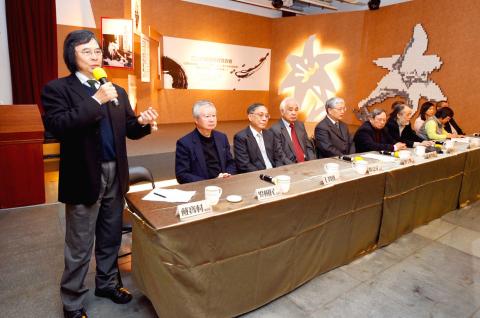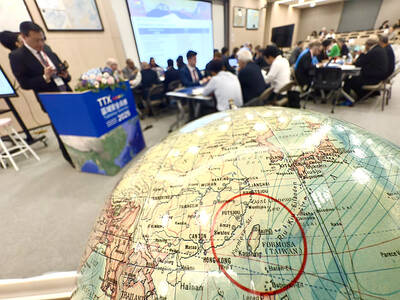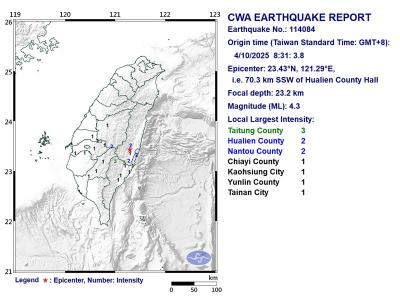The Chinese Nationalist Party (KMT) should be required to open party archives to allow academics to search for a list of people targeted during the 228 Incident, a leading expert on Taiwanese history said yesterday.
“We talk a lot about recovering the KMT’s ‘ill-gotten assets,’ but for some reason, no one seems to talk about recovering the documents stored in the party archives,” Academia Sinica’s Institute of Taiwan History research fellow Hsu Hsueh-chi (許雪姬) said at a commemorative event held at the National 228 Memorial Museum.
The KMT has been reluctant to open its historical archives in the absence of a formal legal obligation, despite ruling the nation as a one-party state for more than 50 years, Hsu said.

Photo: Lo Pei-der, Taipei Times
“The most important documents we are missing are the KMT’s; we have only seen a small proportion of the material relating to Taiwan Province,” she said. “At the very least, KMT officials would have written down any decisions that were made. Because the party led the government, those decisions would have been what government agencies implemented, so in some ways, KMT documents are a step up from official archives.”
Information on decisionmaking from the archives could shed light on how and why 228 Incident victims were targeted, she said, adding that a “name list” of targeted individuals was the key “missing link” in recent research.
The 228 Incident refers to the crackdown launched by the Chinese Nationalist Party (KMT) regime against civilian demonstrations following an incident in Taipei on Feb. 27, 1947. The event also marked the beginning of the White Terror era that saw thousands of Taiwanese arrested, imprisoned and executed.
“We do not know if the list of names [of 228 victims] was provided by a [Taiwanese] banshan [“half mountain,” a reference to those Taiwanese who went to China and joined the KMT during Japanese colonial rule], or by KMT sympathizers or others — but there must have been a list, because the regime was very methodical in making arrests,” Hsu said, adding that it was clear that intelligence agents had infiltrated opposition groups, enabling the extensive “payback,” which followed the uprising.
Other missing pieces included the division of labor between the military, police and intelligence services, as well as the exact fates of most victims, she added.
Based on the available documents, it is still impossible to determine the exact number of victims of the incident, National Central University history professor Lai Jeh-hang (賴澤涵) said.
Estimates for the number of people injured or killed range widely, from thousands to tens of thousands, with the 228 Memorial Foundation as of August last year having provided compensation in 2,288 cases, according to the foundation’s Web site.

Taiwan is stepping up plans to create self-sufficient supply chains for combat drones and increase foreign orders from the US to counter China’s numerical superiority, a defense official said on Saturday. Commenting on condition of anonymity, the official said the nation’s armed forces are in agreement with US Admiral Samuel Paparo’s assessment that Taiwan’s military must be prepared to turn the nation’s waters into a “hellscape” for the Chinese People’s Liberation Army (PLA). Paparo, the commander of the US Indo-Pacific Command, reiterated the concept during a Congressional hearing in Washington on Wednesday. He first coined the term in a security conference last

DEFENSE: The National Security Bureau promised to expand communication and intelligence cooperation with global partners and enhance its strategic analytical skills China has not only increased military exercises and “gray zone” tactics against Taiwan this year, but also continues to recruit military personnel for espionage, the National Security Bureau (NSB) said yesterday in a report to the Legislative Yuan. The bureau submitted the report ahead of NSB Director-General Tsai Ming-yen’s (蔡明彥) appearance before the Foreign and National Defense Committee today. Last year, the Chinese People’s Liberation Army (PLA) conducted “Joint Sword-2024A and B” military exercises targeting Taiwan and carried out 40 combat readiness patrols, the bureau said. In addition, Chinese military aircraft entered Taiwan’s airspace 3,070 times last year, up about

A magnitude 4.3 earthquake struck eastern Taiwan's Hualien County at 8:31am today, according to the Central Weather Administration (CWA). The epicenter of the temblor was located in Hualien County, about 70.3 kilometers south southwest of Hualien County Hall, at a depth of 23.2km, according to the administration. There were no immediate reports of damage resulting from the quake. The earthquake's intensity, which gauges the actual effect of a temblor, was highest in Taitung County, where it measured 3 on Taiwan's 7-tier intensity scale. The quake also measured an intensity of 2 in Hualien and Nantou counties, the CWA said.

The Overseas Community Affairs Council (OCAC) yesterday announced a fundraising campaign to support survivors of the magnitude 7.7 earthquake that struck Myanmar on March 28, with two prayer events scheduled in Taipei and Taichung later this week. “While initial rescue operations have concluded [in Myanmar], many survivors are now facing increasingly difficult living conditions,” OCAC Minister Hsu Chia-ching (徐佳青) told a news conference in Taipei. The fundraising campaign, which runs through May 31, is focused on supporting the reconstruction of damaged overseas compatriot schools, assisting students from Myanmar in Taiwan, and providing essential items, such as drinking water, food and medical supplies,